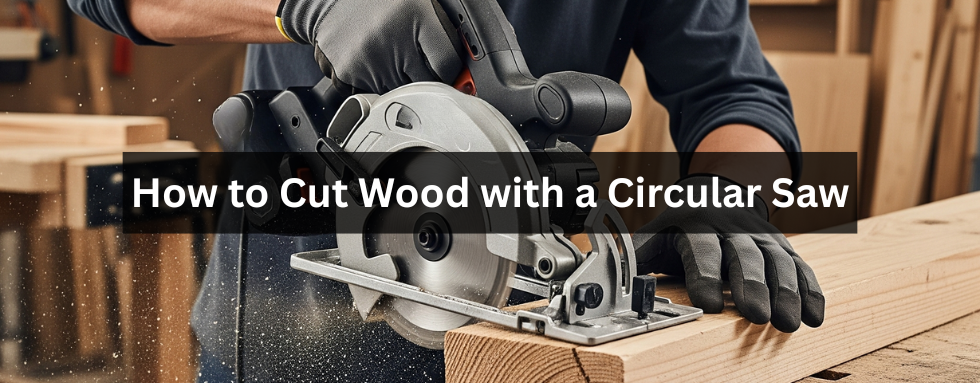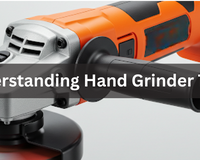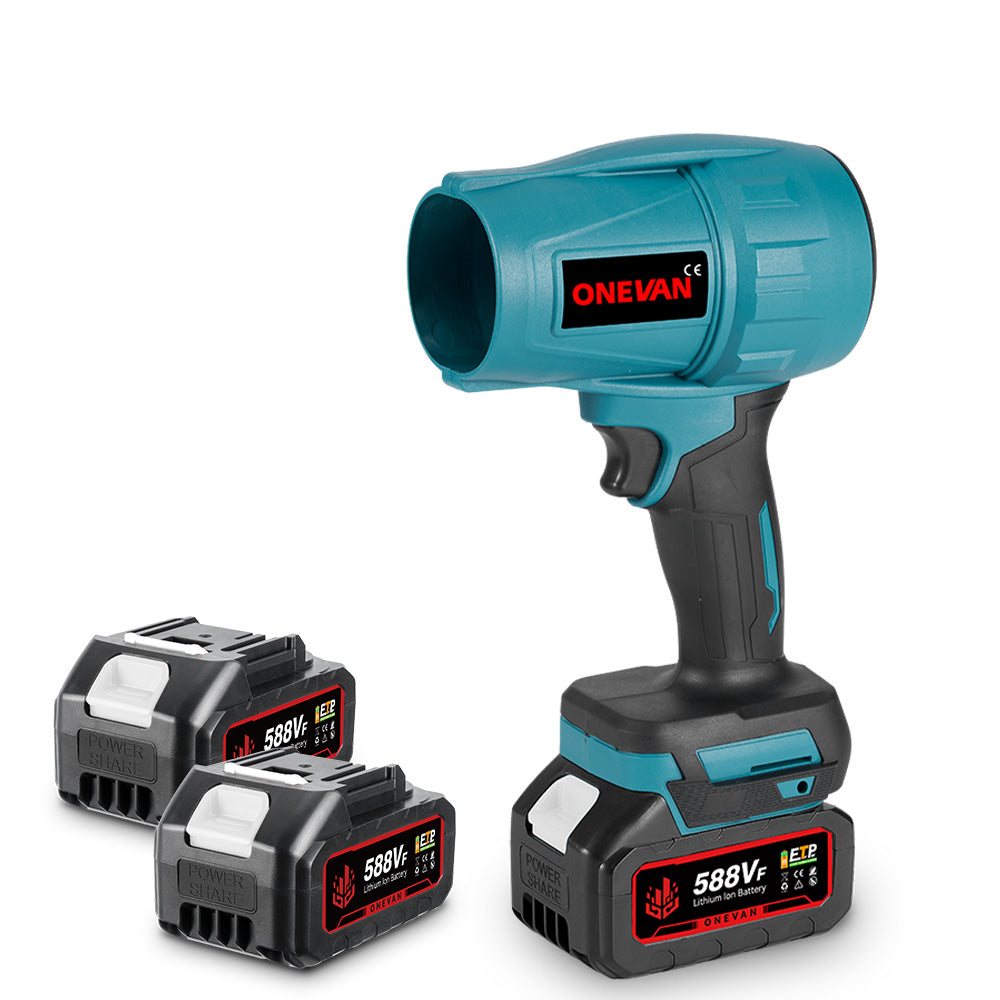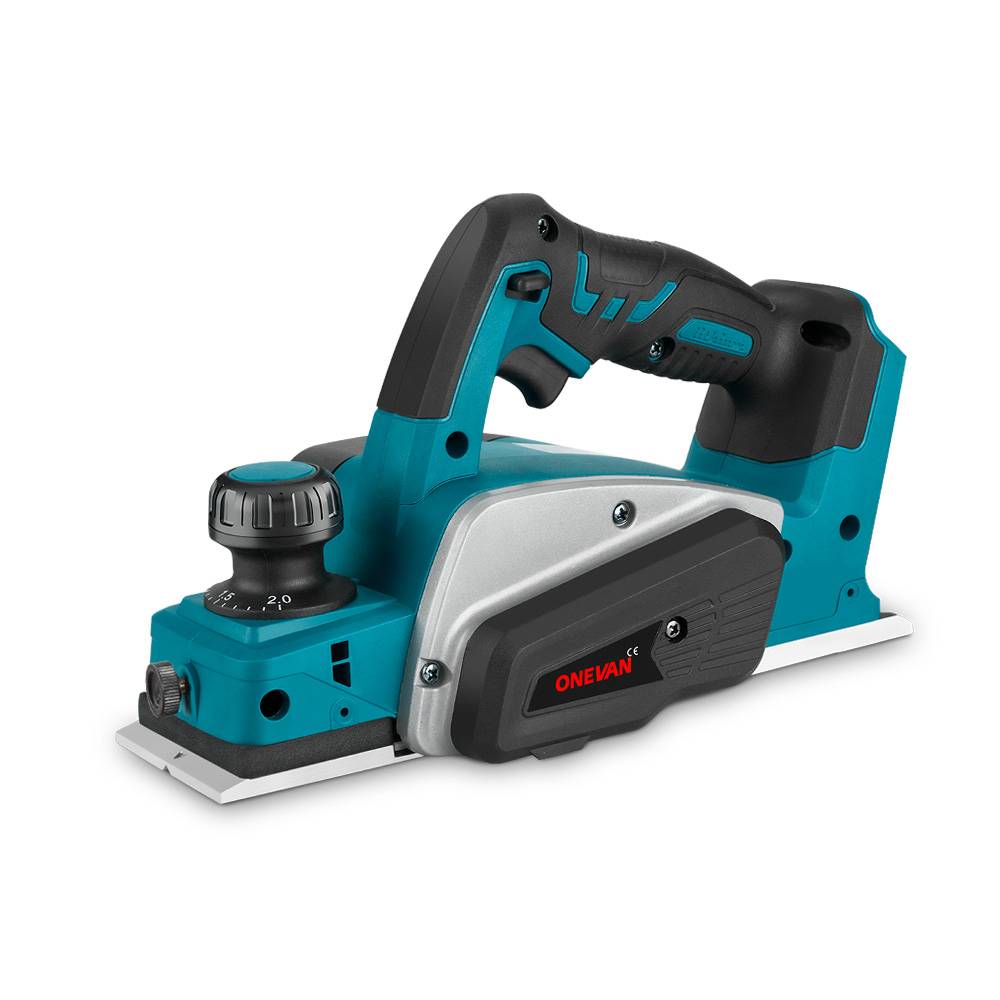Circular saws have become essential tools in modern woodworking and building. The market size of circular saws will reach 246.1 million by 2027. This proves their increasing popularity among professionals and DIY enthusiasts. The most popular size is 7 1/4 inches, which is convenient for home workers and DIYers. It typically cuts through materials up to about 2 1/2 inches thick at 90 degrees.
Knowing how to use a circular saw to cut wood correctly is an improvement to your DIY skills. As an example, the ability to use these skills will enable you to approach complicated projects confidently. You can handle everything from simple home repairs to complex furniture constructions. Acquiring good knowledge of using a circular saw can make a significant difference, leading to professional-quality results and reducing the likelihood of frustrating mistakes.
You can use circular saws for more than just simple straight cuts. You can get precise crosscuts, smooth ripping cuts, and complex angles. However, you understand the fundamentals. This guide covers everything from basic safety to advanced techniques.
1. Understanding Your Circular Saws
Every circular saw contains several key components that work together to create clean, accurate cuts. The blade serves as the cutting element, spinning at high speeds to slice through wood fibers. Meanwhile, the base plate provides stability and guidance since it keeps your cuts straight and square. Additionally, a well-designed handle provides better ergonomics and improved grip to enhance control and comfort during operation.
Blade depth adjustment enables you to determine the depth at which the saw inserts into your material. For most cuts, particularly when performing straight cuts, the blade typically should extend approximately 1/4 inch below the material to minimize splintering on the underside. Furthermore, the base plate is tilted to make bevel cuts with the angle adjustment feature, which usually measures 0 to 45 degrees.
The safety features differ depending on the model, but usually have blade guards, which automatically retract when cutting. The guards later come back to cover the blade. Other models have electric brakes that prevent the blade from spinning as soon as you release the trigger. Therefore, knowing the parts of the saw allows you to use it safely and efficiently.
The ONEVAN 180mm 7-inch brushless cordless circular saw features a user-friendly design that makes adjustments easy. The depth and angle markings are clear, helping you achieve accurate settings consistently. Moreover, the ergonomic design of the handles prevents fatigue from extended use, while the strong base plate maintains accuracy even in demanding conditions.
2. Types of Circular Saws Suitable for Cutting Wood
There are several circular saw types. Each has its own uses and benefits. The forms have their own pros and cons for different tasks.
Corded Circular Saws
Corded circular saws have unlimited runtime and steady power flow. These power tools are ideal for heavy-duty jobs that require constant operation. The power remains constant regardless of how long you use it. But the power cord limits your movement. You need electrical outlets near your work area.
Wood Cutting Performance
Corded circular saws cut through thick hardwood with ease. They maintain full power during long cuts. The steady electricity means no power drops during tough cuts. They handle dense wood like oak and maple without slowing down.
Pros: Unlimited runtime, consistent power, typically lower cost
Cons: Limited mobility, requires an electrical outlet, and cord management is needed.
Best Applications: Workshop use, large projects, continuous cutting tasks
Cordless Circular Saws
Cordless circular saws offer great convenience and portability. New battery technology gives good runtime and power similar to corded models. These circular saws eliminate cord hassles. You can work anywhere without electricity. The ONEVAN 125mm Brushless Cordless Circular Saw offers excellent portability for lighter wood cutting tasks and precision work.
Wood Cutting Performance
Modern cordless circular saws cut softwood and medium hardwood well. They work great for framing lumber and plywood. Battery power is enough for most wood projects. They make clean cuts in pine, fir, and cedar.
Pros: Excellent portability, no cord management, works anywhere
Cons: Limited runtime, requires battery charging, typically higher cost
Best Applications: Construction sites, outdoor projects, tight spaces
Worm Drive Saws
Worm drive saws have the motor mounted behind the blade. This creates a longer, narrower shape. Worm drive saws are designed to provide higher torque, making them particularly effective for cutting dense materials. It offers better sight lines along the cut. The gear system delivers more power at lower speeds.
Wood Cutting Performance
Worm drives excel at cutting thick, dense hardwoods. They power through wet lumber without binding. The high torque cuts through knots easily. They handle pressure-treated lumber and engineered wood well.
Pros: High torque output, excellent sight lines, superior power transfer
Cons: Heavier weight, more expensive, requires more maintenance
Sidewinder Saws
Sidewinder saws position the motor beside the blade. This creates a more compact and lighter tool. This design offers better balance and easier handling. The direct drive system typically provides efficient power transfer and requires less maintenance compared to other systems.
Wood Cutting Performance
Sidewinder saws are suitable for a variety of wood cutting applications, including rough cuts and general framing, making them ideal for many carpentry tasks. The lighter weight reduces fatigue during long cuts. They make precise cuts in trim and finish materials.
Pros: Lighter weight, better balance, lower maintenance, less expensive
Cons: Lower torque than worm drives, less sight line visibility
Best Applications: General woodworking, DIY projects, finish carpentry
3. How to Choose a Circular Saw Blade for Cutting Wood
Blade selection greatly affects how well you cut wood and how smooth the finish looks. Different blade types work best for specific wood cutting jobs. Making the right choice gives you the best results.
Ripping Blades
Ripping blades generally have 16 to 40 teeth designed to cut along the grain; the lower tooth count assists in reducing tear-out during longitudinal cuts. These blades work best for cutting boards lengthwise.
Wood Cutting Performance: Ripping blades cut through thick hardwood boards fast. They remove wood chips quickly when cutting with the grain. The large gullets prevent clogging in resinous woods like pine. They handle thick lumber and rough cuts well.
Best for: Cutting 2x4s lengthwise, making boards narrower, rough carpentry work
Crosscut Blades
Crosscut blades have more teeth, 60-100, with smaller gullets. They cut across the wood grain (against the grain). These blades make smooth, clean cuts but work more slowly.
Wood Cutting Performance: Crosscut blades are designed to provide smooth cuts and can be effective for hardwoods like oak and maple. They prevent tear-out on plywood and veneer. The many small teeth slice wood fibers cleanly. They work great for finish cuts where appearance matters.
Best for: Cutting boards to length, trimming, fine woodworking, cabinet work
Combination Blades
Combination blades mix both ripping and crosscut tooth patterns. These blades handle both grain directions fairly well. They work well for general wood cutting.
Wood Cutting Performance: Combination blades cut most wood types decently. They handle softwood framing lumber well. The mixed tooth pattern works for both rip and crosscuts. They're not the best at either job, but they save time changing blades.
Best for: General construction, DIY projects, when you need one blade for everything
Fine-Finish Blades
Fine-finish blades typically feature 80 to 100 sharp teeth, offering ultra-smooth cuts in delicate woods; the high tooth count contributes to preventing splintering along cut edges. These blades cut slowly but leave perfect edges.
Wood Cutting Performance: Fine-finish blades eliminate tear-out on plywood faces. They cut hardwood veneer without chipping. The many teeth create glass-smooth cuts. They work great on expensive woods where finish quality matters most.
Best for: Cabinet doors, trim work, hardwood flooring, expensive lumber.
Blade Size for Wood Cutting
7¼-inch blades handle most wood cutting jobs. They cut through 2x lumber at 45 degrees. This size works for framing, decking, and general construction.
6½-inch blades work well for thinner wood. They cut 2x4s and plywood easily. These blades require less power and function effectively on cordless circular saws.
5⅜-inch blades fit compact saws. They handle 1x lumber and thin materials. Good for trim work and light cutting jobs.
The ONEVAN 180mm Brushless Cordless Circular Saw exemplifies this versatility with its ability to handle demanding cutting tasks.
4. Choosing the Right Circular Saw for Your Wood Cutting Needs
Several factors matter when picking a circular saw for wood cutting. Each affects how well you can cut different types of wood.
Power Requirements for Wood Cutting
Power requirements: depend on what wood you plan to cut. Different wood types need different power levels.
15-amp motors: cut through dense hardwoods like oak and maple easily. They maintain speed when cutting thick lumber. These motors power through wet pressure-treated wood without bogging down. They handle knots and tough grain without slowing.
12-13 amp motors: work well for most softwood projects. They cut pine, fir, and cedar boards smoothly. These motors handle plywood and OSB without problems. They work well for framing and general construction.
10-amp motors: suitable for cutting thin wood and light materials. They work fine for trim boards and thin plywood. These motors struggle with thick hardwood or wet lumber.
Best for wood cutting: Choose 15-amp for hardwoods, 12-13 amp for general lumber, 10-amp for light wood only.
Size and Weight for Wood Projects
Size and weight affect how easily you can cut wood in different positions.
Heavy saws:10-12 lbs cut straighter lines in thick boards. The weight helps the blade track through dense wood. They work great for ripping long boards on sawhorses. But they tire you out during overhead cuts or long projects.
Medium saws: 8-10 lbs balance power and comfort well. They handle most lumber without excessive fatigue. Good for all-day framing work and general construction.
Light saws:6-8 lbs reduce arm strain during overhead cuts. They work great for cutting rafters and ceiling work. Perfect for trim carpentry where precision matters more than power.
Best for wood cutting: Heavy saws for thick lumber, medium saws for general use, light saws for overhead and precision work.
Cutting Capacity for Wood Thickness
Cutting capacity determines the maximum wood thickness that can be cut in one pass.
7¼-inch circular saws: 7¼-inch saws are typically designed to cut materials up to 2½ inches thick at 90 degrees. They go through 2x10 boards easily. At 45 degrees, they cut 1¾ inches thick. This handles 2x4 bevels and most angled cuts.
6½-inch circular saws: 6½-inch saws cut 2⅛ inches at 90 degrees. They handle 2x8 boards but not 2x10s. At 45 degrees, they cut 1½ inches. Good for most framing lumber.
5⅜-inch compact circular saws: 5⅜-inch compact circular saws cut 1⅝ inches at 90 degrees. They go through 2x4s but struggle with 2x6s. At 45 degrees, they cut 1⅛ inches.
Best for wood cutting: 7¼-inch for thick lumber, 6½-inch for standard framing, 5⅜-inch for thin boards only.
Build Quality for Wood Cutting Durability
Build quality affects how long your circular saw lasts when cutting wood daily.
Professional-grade circular saws: Professional-grade circular saws have strong aluminum base plates that stay flat. They use quality bearings that handle wood dust and debris. The motors resist overheating during heavy wood cutting. These circular saws maintain accuracy after years of use.
Consumer-grade circular saws: Consumer-grade circular saws work fine for occasional wood projects. They have plastic guards that may crack with heavy use. The base plates can warp over time. Motors may overheat during extended hardwood cutting.
Best for wood cutting: Professional grade for daily use and hardwoods, consumer grade for weekend projects and softwood only.
5. Circular Saw Safety Measures During Cutting Wood
The right safety gear prevents serious injuries when using circular saws to cut wood. Each piece of equipment protects against specific dangers from wood cutting.
Safety glasses
Safety glasses stop pine splinters from hitting your eyes. They block oak and maple chips that fly during crosscuts. Sawdust clouds can't get into your eyes with proper glasses. Side shields protect from wood pieces that bounce sideways.
Requirements: Must meet ANSI Z87.1 standards. Need full side shields. Regular prescription glasses don't offer sufficient protection against high-speed wood debris.
Hearing Protection
Hearing protection safeguards your hearing from the intense noise of a circular saw. Wood cutting with circular saws creates 90-100 decibels. This noise level damages hearing over time. Protects ears during long ripping cuts through lumber. Prevents hearing damage from crosscutting hardwood that generates high noise levels. Blocks harmful noise when cutting multiple boards in a row.
Options: Foam earplugs reduce noise by 25-30 decibels. Over-ear muffs block 20-25 decibels. Silicone plugs work well for shorter wood cutting jobs.
Work Gloves
Work gloves improve grip. Besides, work gloves can also stop splinters from pressure-treated lumber from entering the skin. Protect your hands when moving cut boards with sharp edges.
Safety rule: Never wear loose gloves near the blade. Loose gloves can catch on moving parts. Use tight-fitting mechanics' gloves or special woodworking gloves only.
Dust Masks
Dust masks filter wood dust from the air you breathe. Wood dust irritates lungs and throats. Some wood types cause allergic reactions.
Types: N95 masks handle most wood-cutting dust. P100 filters work better for people with allergies. Paper masks are not effective enough for removing wood dust.
6. Safety Precautions for Circular Saws
Proper setup and operating procedures prevent accidents and ensure consistent results. Following these guidelines creates habits that become automatic with practice.
Pre-Operation Inspection
Pre-Operation Inspection involves checking blade installation, guard operation, and overall tool condition. Verify the blade is tight and properly seated on the arbor. Test the blade guard to confirm it moves freely and returns to the closed position. Inspect the power cord for damage on corded models.
Workspace Preparation
Workspace Preparation eliminates hazards and improves cutting accuracy. Clear the area of debris, tools, and distractions. Ensure adequate lighting to see cut lines clearly. Position work surfaces at comfortable heights to maintain control throughout the cut.
Proper Blade Installation
Proper Blade Installation requires following the manufacturer's specifications exactly. Install blades with teeth pointing in the direction of rotation. This is typically forward at the bottom of the blade. Tighten the arbor nut securely, but avoid over-tightening, which could damage threads.
Cutting Stance and Grip
Cutting Stance and Grip affect control and stability during operation. Stand beside the cut line, never directly behind the saw. Maintain a firm grip with both hands while keeping your body balanced. Position yourself so the saw blade is visible throughout the cut.
Material Support
Material Support prevents binding and kickback that can cause serious injuries. Support both sides of the cut so neither piece falls or binds the blade. Use sawhorses, cutting tables, or other stable surfaces to support long pieces adequately.
7. Preparing to Cut Wood with a Circular Saw
Selecting the Right Wood
Different wood types will require various methods and blade choices to achieve the best results. Knowing material properties will guide you to select the correct cutting parameters and anticipate realistic results.
Most types of blades cut easily through softwoods such as pine, fir, and cedar. These materials give rise to long and stringy chips that may block blade gullets in case of cutting too violently. Moderate feed rates should be used, and enough clearance of the chip should be maintained to ensure smooth cutting.
Oak, maple, and cherry are hardwoods that require more power and exhibit different chip characteristics. These heavy materials produce fine dust and small chips, which clear more readily compared to softwood chips. They are, however, in need of sharper blades and reduced feed rates to avoid burning.
Plywood and engineered materials present challenges during cutting due to their layered construction, which can cause tear-out or chipping if not cut with the appropriate blade and technique.
This is minimized with specialty plywood blades with large tooth counts and negative rake angles.
Measuring and Marking the Wood
Accurate measurements and clear marks ensure your cuts land exactly where intended. Precision in this step prevents waste and reduces the need for correction cuts.
Measuring Tools should be appropriate for your project's accuracy requirements. Standard tape measures work well for rough construction. Precision rules and squares serve fine woodworking applications. Always measure twice before cutting and verify measurements against your project plans.
Marking Straight Lines requires appropriate tools and techniques for different situations. Chalk lines work well for long cuts on large sheets. Straightedges serve shorter cuts. Speed squares provide quick right angles and common angles for construction applications.
Layout Techniques should account for saw blade thickness (kerf) to ensure final dimensions match your requirements. Always mark which side of the line to cut on. Verify measurements include or exclude the kerf width as appropriate for your project.
Setting Up Your Workspace
Proper workspace setup improves safety, accuracy, and efficiency while reducing fatigue and frustration during cutting operations.
Lighting Requirements ensure you can see cut lines clearly throughout the operation. Natural light works well but may change direction and intensity throughout the day. Supplemental lighting should illuminate the work area evenly without creating shadows across cut lines.
Work Surface Considerations affect both safety and cut quality. Surfaces should be stable, level, and at an appropriate height for comfortable operation. The work surface should be expendable since the saw blade will cut slightly into it during through cuts.
Material Support Systems prevent workpieces from falling or binding during cuts. Long boards require support on both sides of the cut line to prevent the saw from binding as pieces separate. Heavy sheets like plywood need support at multiple points to prevent sagging that could bind the blade or affect cut accuracy.
8. Techniques for Cutting Wood with a Circular Saw
Basic Cutting Techniques
Mastering fundamental cuts provides the foundation for all circular saw operations. These techniques form the basis for more advanced applications and should be practiced until they become automatic.
Straight Cuts
Straight Cuts require maintaining a consistent blade position relative to your marked line throughout the cut. Start with the base plate firmly against the workpiece and the blade guard retracted slightly. Align the blade with your cut line before starting the motor.
Begin the cut by allowing the spinning blade to enter the wood gradually. Apply steady forward pressure while maintaining lateral position against your guide. Let the blade do the work rather than forcing it through the material.
Cross Cuts
Cross-cuts involve cutting across the wood grain. They typically require a different blade selection and technique than ripping cuts. These cuts tend to produce more splintering, especially on the exit side, where wood fibers are unsupported.
Position the workpiece so the "good" side faces down. This allows any splintering to occur on the less visible face. Support both sides of the cut adequately to prevent the off-cut from falling and binding the blade.
Advanced Cutting Techniques
Once you master basic cuts, advanced techniques expand your capabilities and improve cut quality in demanding applications.
Bevel Cuts
Bevel Cuts require adjusting the base plate angle to create cuts other than 90 degrees to the wood surface. Most circular saws adjust from 0 to 45 degrees with positive stops at common angles like 22.5 and 45 degrees.
Set the desired angle using the saw's built-in protractor and tighten the adjustment mechanism securely. Verify the angle with a separate protractor or angle finder before cutting. Saw scales are not always perfectly accurate.
Ripping Cuts
Ripping Cuts follow the wood grain direction. They typically create long, straight cuts that divide boards into narrower pieces. These cuts require a different blade selection and setup than crosscuts.
Use a ripping blade with fewer, larger teeth that clear chips efficiently. Set up guides to maintain straight cuts over long distances. Feed the saw steadily but avoid forcing it through the cut.
Tips for Achieving Clean Cuts
Cut quality depends on multiple factors working together to produce professional results. Attention to these details separates amateur work from professional-grade outcomes.
Firstly, blade Sharpness and Condition affect every aspect of cutting performance. Sharp blades cut faster, require less feed pressure, produce smoother surfaces, and generate less heat than dull blades. They also reduce splintering and tear-out that degrade appearance.
Secondly, support and Guide Systems provide the stability necessary for accurate cuts. Even skilled operators cannot maintain perfect hand-eye coordination over long cuts without mechanical assistance.
Lastly, commercial cutting guides clamp to workpieces and provide precise reference surfaces for the saw base. Site-built guides using straight lumber or plywood strips work well for occasional use.
9. Troubleshooting Common Issues with Circular Saws
1. Saw Won't Start
Possible Causes:
- Power supply problems (tripped breakers, unplugged cords, dead outlets)
- Damaged power cord or plug connections
- Faulty trigger switch mechanisms
- Internal motor problems (brushes, windings, connections)
- Safety lock engaged or malfunctioning
- Battery issues in cordless circular saws (dead battery, poor connections)
Troubleshooting Steps: First, verify the power supply by testing the outlet with another device and checking circuit breakers. Inspect the power cord for damage, cuts, or loose connections at both ends. Check the trigger switch by ensuring it moves freely and makes solid contact. For cordless circular saws, ensure the battery is fully charged and properly seated in the tool. Clean battery contacts with fine sandpaper if corrosion is present.
2. Blade Is Stalling
Possible Causes:
- A dull or damaged blade is cutting inefficiently
- Incorrect blade type for the material being cut
- Excessive feed rate forces the blade beyond its capacity
- Blade binding due to poor workpiece support
- Dust and debris accumulation are affecting blade rotation
Troubleshooting Steps: Examine the blade for damage, dullness, or improper installation. Replace damaged blades immediately and sharpen or replace dull blades. Reduce the feed rate to allow the blade to cut at its designed speed. Check workpiece support to prevent binding as the cut progresses.
3. Excessive Vibration
Possible Causes:
- A bent, warped, or damaged blade creates an imbalance
- Loose blade mounting hardware, allowing wobble
- Worn saw bearings are creating internal play
- Debris accumulation on the blade or in the saw housing
Troubleshooting Steps: Remove the blade and inspect it for damage, warping, or foreign material attachment. Check blade mounting hardware for tightness and proper installation. Regularly cleaning dust and debris from the blade, housing, and ventilation areas helps maintain optimal performance, reduces the risk of overheating or motor failure, and enhances operator safety.
4. Inaccurate Cuts
Possible Causes:
- The base plate is not square to the blade, requiring adjustment
- Damaged or warped base plate affecting guidance
- Inadequate workpiece support allows movement during cutting
- Blade deflection due to dullness or inappropriate type
Troubleshooting Steps: Check base plate squareness using a reliable square against both the plate and blade. Inspect the base plate for damage, warping, or debris that could affect its guidance function. Evaluate workpiece support systems to ensure stability throughout the cut.
5. Burning Smell or Marks on Material
Possible Causes:
- Dull blade creating excessive friction and heat buildup
- Cutting too slowly, allowing heat accumulation in one area
- The wrong blade type is generating an inappropriate cutting action
- Resin or pitch buildup on the blade reduces cutting efficiency
Troubleshooting Steps: Examine the blade for sharpness and condition. Replace or sharpen dull blades immediately to prevent material damage and safety hazards. Adjust cutting speed to maintain steady progress through the material. Clean resin and pitch buildup from blade surfaces using appropriate solvents.
6. Dust and Debris Accumulation
Possible Causes:
- Inadequate dust collection or extraction systems
- Blocked ventilation ports are preventing airflow through the saw motor
- Cutting materials that produce excessive fine dust
- Working in enclosed spaces with poor air circulation
Troubleshooting Steps: Install dust collection systems appropriate for your cutting volume and workspace. Clean motor ventilation ports regularly to maintain cooling airflow. Use appropriate respiratory protection when cutting materials that generate fine dust. Improve workspace ventilation through fans, open doors, or dedicated ventilation systems.
10. Conclusion
Learning how to cut wood with a circular saw opens unlimited possibilities for DIY projects and professional applications. From basic straight cuts to complex bevels and precision crosscuts, these versatile tools handle virtually any wood cutting task when appropriately used.
11. FAQs
How do I know what size blade to use?
Blade size depends on your saw's specifications and cutting requirements. Handheld circular saws typically accommodate 7 1/4-inch blades, while miter or table saws are better suited for larger blades. Check your saw's manual for the maximum blade diameter.
What is the best way to cut plywood with a circular saw?
Use a fine-tooth crosscut blade with 60-80 teeth to minimize splintering. Place the good side of the plywood face down so any tear-out occurs on the back side. Support the plywood adequately on both sides of the cut using sawhorses or cutting tables.
How often should I replace the saw blade?
Replace blades when cutting performance deteriorates noticeably. Signs include increased effort required to feed the saw, rough or burned cut surfaces, excessive splintering, and visible damage to blade teeth. With moderate use, quality blades can last months or even years.
Can I cut curves with a circular saw?
Circular saws are designed for straight cuts only. The large blade diameter and base plate configuration prevent tight radius curves. For curved cuts, use jigsaws, band saws, or specialty tools designed for that purpose.
What is the best way to cut thick wood with a circular saw?
For wood thicker than your blade's cutting capacity, make multiple passes. Cut from one side to maximum depth, then flip the board and cut from the other side, aligning carefully with the first cut. Use a sharp blade and moderate feed rate to prevent binding.
Can I use a circular saw to cut metal or concrete?
But you need specialized blades designed for these materials. Metal cutting requires carbide-tooth or abrasive blades, while concrete needs diamond blades. However, can a metal circular saw cut wood? Standard metal cutting blades are not suitable for wood and will produce poor results and potential safety hazards.
Can I cut plywood with a circular saw?
Circular saws work excellently for cutting plywood when set up properly. Use fine-tooth blades to minimize splintering, support the sheet adequately, and consider the techniques mentioned above for best results. Many professional carpenters prefer circular saws for breaking down large plywood sheets.
What is the best blade for cutting hardwood?
For hardwood cutting, use combination blades with 40-50 teeth or dedicated crosscut blades with 60-80 teeth. These provide smooth cuts with minimal tear-out. Carbide-tipped teeth stay sharp longer when cutting dense hardwoods. Feed the saw slowly to prevent burning, and ensure the blade stays sharp for best results.









